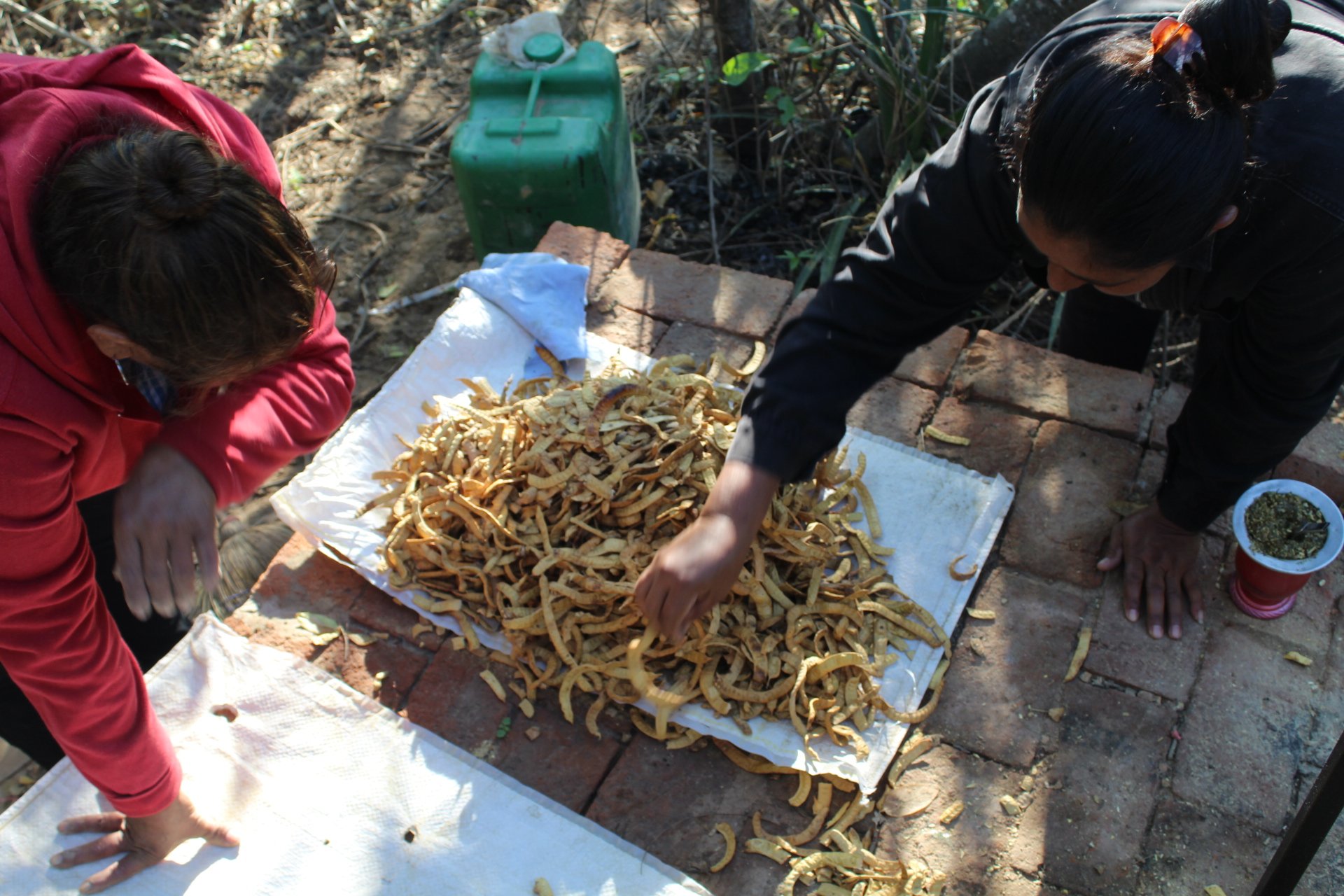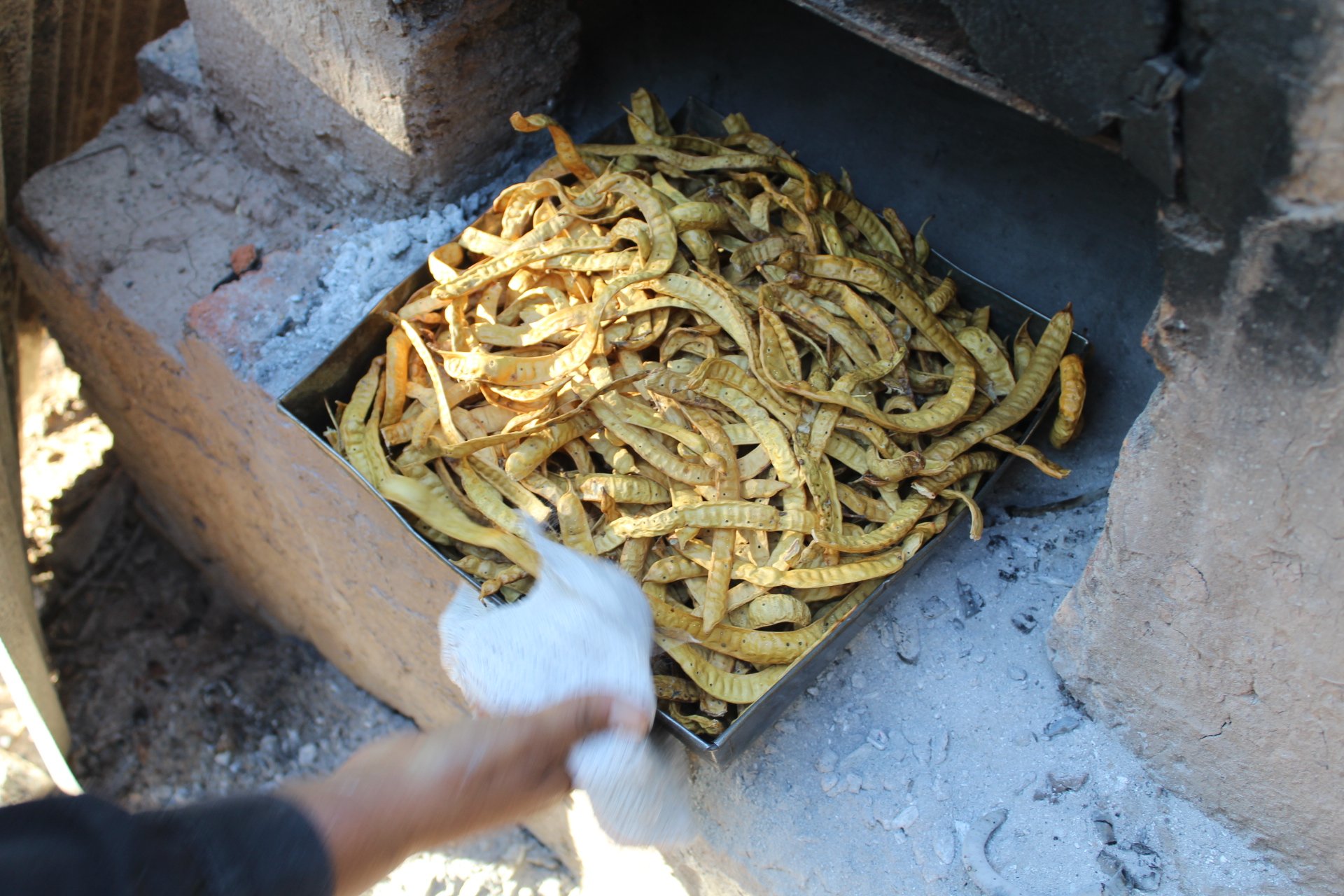
The Sweet Story the Gran Chaco’s Carob Trees
Text and photos by Kevin Vaughn
hace click aquí para leer en castellano
This story is part of a monthly collaboration with POSCO, a small Argentine company that produces vegetable-cured, hand-crafted leather shoes. Once a month, MATAMBRE x POSCO will bring a story inspired by walking in search of the simple pleasure of discovery.
There's a recipe for ‘aloja de algarroba’ in El gran libro de la cocina Argentina, published in 1985. The ingredients read:
3 ½ kilos of algarroba
The necessary amount of water and sugar
I paraphrase (but not much): Wash 1 ½ kilo of algarroba (carob pods). Crush in a mortar and add to a ceramic jug with 12 cups of hot water. After three days and you see signs of fermentation, filter the liquid, add the remaining algarroba, and fill the jug halfway with water. The following day, add sugar to taste and it’s ready to drink. It can also serve as a mother aloja — every two days refresh the brew with new algarroba and cold water.
The authors don’t even write an intro explaining what aloja is — a lightly fermented drink that was popular in the Argentine northwest. Imagine a distant cousin of chicha or a less acidic version of kombucha.
The ambiguity of instruction is common in Argentine recipe writing but I see it most in traditional dishes. A recipe isn’t just the embodiment of its writer, it says a lot about the community that reads it.
Let’s suppose this standard recipe format isn’t just lazy writing. The assumption is that we’re not learning something entirely new. Afterall, algarroba pods aren’t sold. They’re gathered. The reader who chooses to make this recipe must live where algarroba grows, has likely seen the drink prepared, and understands the cues (cocoa-like fragrance, milky yellow color) to adjust proportions based on the size of the jug. They know to use the entire pod and not just the seeds and how to interpret the verb ‘machacar’ when breaking down the pods in the mortar. A fine powder? Coarse flour? Chunky pieces?
The fermented drink was hardly new in 1985. Evidence of algarroba as a Pre-Columbian food source has been discovered in archaeological sites along the Andes Mountains that date back thousands of years. When the Spanish founded Santiago de Estero in the mid-16th century, they estimated one-third of the local diet came from the tree in some form. The National Archive has a photograph dated in 1928 of a family selling aloja in a plaza in San Miguel de Tucumán.
The cookbook’s lack of guidance carries with it a massiveness. A tiny set of instructions with all the fat trimmed represents millennia of preparation passed down through tradition and folklore. The recipe is as much a historical record as it is real instruction.
The Argentine homecook of today likely doesn’t have the same schooling — even if they come from a region full of algarrobo trees that litter their yard with pods. They’ve run out of time to gather and ferment, space to house a selection of ceramic jugs, the taste has disappeared from the collective memory.
It’s been a year and half since I was in the Gran Chaco, the northern region where the tree most abounds. What I remember most is the smell of warm cacao. When white algarroba is toasted until it turns tan and yellow, it perfumes the air with the smell of a chocolate cake baking in the oven.
El Parque Nacional El Impenetrable is new — roads hadn’t been built to properly access the park. The women that live in homes that surround it were building a network to define incoming tourism. They want to do it before someone from outside does, which is what happened in the high tourist zones of the north. They invite travelers into their houses for home cooked meals, give tours around the park, and design crafts like blankets and whittled sculptures.
One of the projects was grinding algarroba into flour to sell. On my first morning there, a group of women had risen at 6am to toast the pods just twenty feet from my campsite before the heat hit triple digits at about 10am. They load pods into a wood burning oven before running it through a grinder that shot algarroba in the air like pollen. I awoke to eat jam with sweet algarroba bread and ‘coffee’ made from the labor happening right next to me. The former an airy cocoa cake and the latter like dusty hot water I quickly exchanged for mate — we can’t win them all.
I spend a lot of my travels walking, hoping to run into something. And in that trek, I often think of the country’s cuisine not just as what it is but what it ceases to be. So seeing a community reclaim an ingredient that has moved so far to the fringes (even in the depths of the Gran Chaco forest many have stopped collecting the algarroba that drops in their yard) was my vibe. Although many have ceased preparing aloja regularly, they were making new recipes — alfajores, pastafrola, and budín. Chef Alina Ruíz (who gives cooking classes to the collective of women) is also turning it into ice cream and sending it to northern Patagonia to morph into a whiskey – more on that soon.
The food we make is a mixture of freedoms and limitations. Today, many have the tools but lack the instruction. The modern Argentine cook likely feels lost by some of the recipes in Gran libro de la cocina Argentina but they’re worth taking the time to relearn, reteach, and repurpose. I tried dozens of new algarroba dishes but couldn’t get my hands on an aloja. I have a small ceramic jar, I just need to get the necessary amount of water and algarroba.
-
MATAMBRE is a reader-funded fanzine and journal dedicated to exploring the socio-economic and political impacts of our food systems from the perspective of Buenos Aires and Argentina. If you think work like this is valuable and would like to support local and independent journalism, please support with a monthly subscription beginning at just $2 a month.
